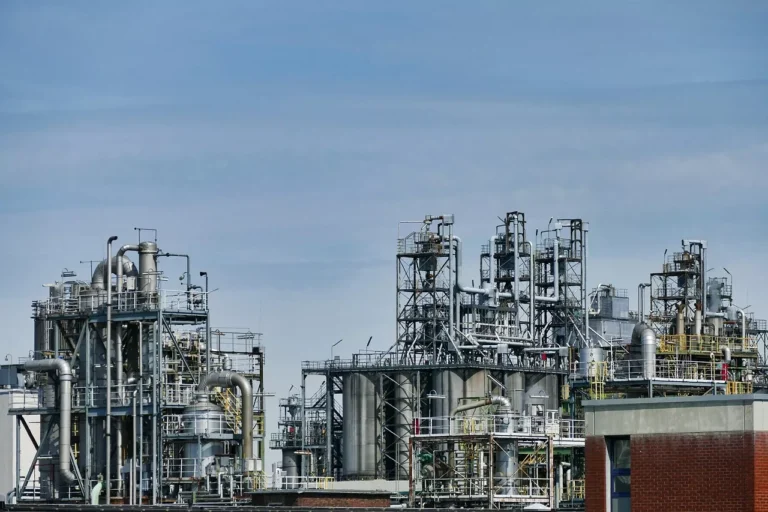
Capstone Green Energy to Supply Scalable 2MW Microturbine System for Government-Backed Power Station in Remote Oceania Community
Capstone Green Energy Holdings, Inc. (PINK: CGEH) and its subsidiary, Capstone Green Energy, LLC, have announced a significant step forward in the provision of clean, reliable, and scalable energy for remote communities. Through its long-term partner and Australian distributor, Optimal Group, Capstone has been selected to serve as the engineering, procurement, and construction (EPC) contractor for a landmark energy project in a remote part of the Oceania region.
The project involves the construction and deployment of a new power station designed to support the energy needs of an isolated community, initially supplying 2 megawatts (MW) of power. This will be achieved using two Capstone C1000S Signature Series microturbines configured in a scalable modular setup. Importantly, the system is designed to expand up to 5MW, providing a flexible infrastructure capable of meeting future increases in demand as the community grows and more businesses come online.
Strategic Location and Fuel Supply Integration
The power station is strategically located near a natural gas conditioning plant that processes gas for liquefied petroleum gas (LPG) production for export across the Asia-Pacific region. This proximity allows the power station to utilize a portion of the processed natural gas directly, reducing the need for additional infrastructure and lowering fuel transport emissions. By using locally available fuel, the project also enhances the region’s energy security.
The microturbines will generate electricity for export to the local grid, initially meeting the full 2MW energy requirement of the community. As the population and industrial presence expand, the modular design of the Capstone system will allow additional microturbine units to be added seamlessly, scaling the power output up to 5MW without major redesigns or system overhauls.
Commissioning of the initial installation is scheduled for November 2025, with detailed planning and system integration already underway. The microturbines will deliver power with a much smaller environmental footprint than traditional diesel generators, making the project an important milestone in sustainable energy development for remote regions.
Meeting the Needs of Remote and Underserved Communities
Capstone CEO Vince Canino emphasized the company’s mission-driven approach to energy access. “Being able to serve the needs of remote, underserved communities is especially meaningful for us,” Canino said. “Our ability to operate on alternate fuels in such isolated locations reinforces Capstone’s original design philosophy—providing compact and mobile power solutions.”
That design philosophy, first envisioned by Capstone founders James Noe and Robin McKay nearly four decades ago, is now bearing fruit in real-world applications across the globe. Canino noted that Capstone’s advanced microturbines represent the culmination of years of innovation, grounded in a company culture committed to “daring greatly and iterating towards success.”
This commitment has resulted in the development of technology that not only reduces environmental impact but also delivers superior performance in difficult conditions. “Capstone’s microturbines provide a much lower carbon footprint on a sustainable basis compared to diesel generators,” Canino added. “Even in the most challenging environments, we are able to provide a very attractive total cost of electricity.”
Advantages of Capstone Microturbine Technology
At the heart of this project is Capstone’s cutting-edge microturbine technology. The C1000S Signature Series microturbines used in the project feature a unique single-shaft design with only one moving part. This is supported by air bearing technology, which eliminates the need for lubricating oil, coolants, or complex maintenance regimes.
This simplicity translates into numerous operational benefits. For example, the reduced need for maintenance is a critical advantage in remote areas where servicing equipment is difficult and expensive. Capstone microturbines are known for their high availability—among the best in the industry—which ensures communities receive consistent and uninterrupted power.
The modular design of the system makes it ideal for locations with evolving energy demands. As needs increase, new units can be added without reengineering the existing setup. This flexibility helps future-proof the power station, making it a long-term solution rather than a temporary fix.
Noise reduction is another major benefit. Microturbines operating on air bearings are significantly quieter than conventional reciprocating engines, which are typically loud and disruptive. This is especially important in small or densely settled communities where noise pollution can be a serious issue.
Environmental and Public Health Benefits
Perhaps the most impactful advantage of the project is the substantial reduction in harmful emissions. By replacing diesel-based generation with natural gas-fueled microturbines, the project will reduce nitrogen oxides (NOx), carbon dioxide (CO₂), and volatile organic compound (VOC) emissions. It will also eliminate particulate matter (PM2.5) emissions, which are associated with respiratory diseases and environmental degradation.
This transition supports broader global efforts to mitigate climate change and improve public health outcomes through cleaner air and more sustainable energy production. As governments and private sector actors seek ways to decarbonize isolated and hard-to-reach areas, projects like this one in Oceania serve as tangible examples of what is possible with advanced distributed energy technologies.
Optimal Group’s Role and Regional Impact
Craig Dugan, CEO of Optimal Group, reinforced the significance of the project, both technologically and socially. “This is yet another project that showcases our commitment to transitioning businesses and communities away from the pollution and messiness of diesel generation,” Dugan said. “This power station will provide a reliable source of electricity to the local community and significantly reduce greenhouse gas emissions.”
Optimal Group has a long history of working in some of the most remote and environmentally challenging regions in the world. Its collaboration with Capstone has led to the successful delivery of many advanced energy systems, combining technological innovation with local expertise.
Dugan highlighted the added benefits of using locally sourced fuel, which not only reduces dependency on imported diesel but also enhances the resilience of the community. “Energy security will be enhanced via the use of locally produced gaseous fuel,” he said. “Optimal’s territory includes some of the most remote and challenging locations globally. Leveraging Capstone’s technological flexibility allows us to deliver intelligently clean solutions at a lower total cost of ownership.”
Dugan also pointed to the future-readiness of the Capstone system. “These solutions, which are renewable fuel-ready, integrate seamlessly with other renewable energy systems as well. We not only can make an impact today, but we have also designed in the ability to be future-proof.”
A Model for Global Replication
The success of this project could have broader implications beyond Oceania. Many regions across the globe—whether in island nations, mountainous territories, or desert areas—face similar challenges when it comes to reliable, sustainable energy access. The modular, scalable, and low-maintenance nature of Capstone’s microturbines makes them an attractive option for such settings.
Governments and development agencies looking for replicable models of decentralized energy generation may find the Capstone-Optimal collaboration a promising blueprint. Not only does it address energy access and emissions, but it also promotes local economic development by supporting the growth of power infrastructure and improving living conditions.










